What is a Bone Graft or Sinus Lift for Dental Implants?
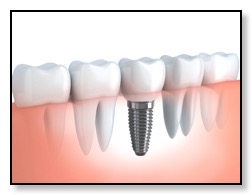
Not everyone has sufficient bone, as it can be lost due to disease, or may simply have been reabsorbed if the teeth were extracted quite some time ago. Some people may have healthy bone, but the shape and size of their jaw could mean there is not enough bone to support the implant. In this case, the bone will need to be augmented, or built up through having a bone graft.
» Oral Surgeons and Dental Implants
» All Ceramic Dental Implants
» Dental Implants, Bridges, Crowns, & Partial Dentures
» Bone Grafting & Sinus Lifts
» Second Opinions for Dental Implants
» Frequently Asked Questions about Dental Implants
» How to calculate your dental insurance copays?
» Before and After photos of our patients
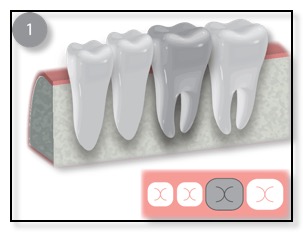
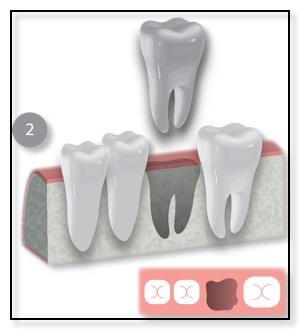
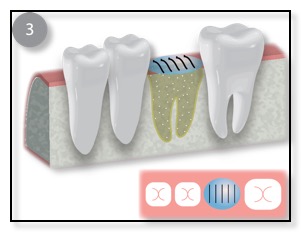
There are two basic types of bone grafting for dental implants. The most common one is after you have a tooth extracted, or if you lost a tooth awhile back. There could be insufficient bone support in such scenarios and thus a bone graft is needed. (See diagram above.) Dr. Tsai will numb the gum before making an incision to expose the area requiring the graft, or if the tooth was just extracted, then she will gently push the gum back to expose the existing bone. She will then place the graft, anchoring it in place if necessary, before covering it with a membrane and suturing the gum back in place. You will be given instructions on how to care for the bone graft site, and how to keep it clean. Bone grafts generally need to be left to heal for several months, although, if the amount of bone grafted was relatively small, it may be possible to place the implant at the same time.
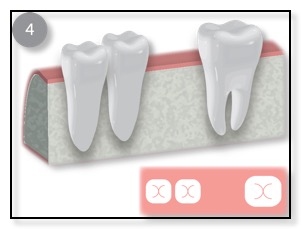
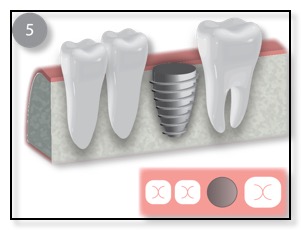
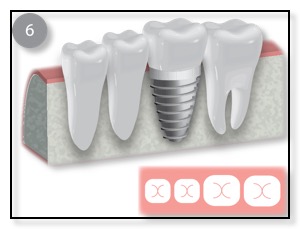
Once the bone is heal, Dr. Tsai will place the implant, allow that to integrate with the bone, and then restore with an Abutment and Crown.
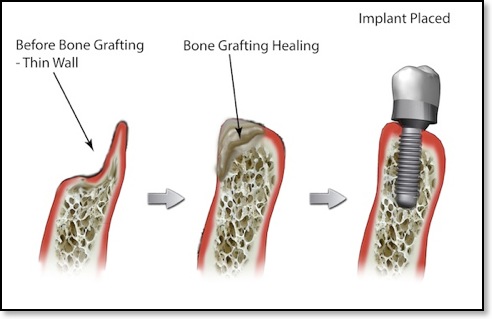
The other common type of bone graft for dental implants is a Ridge Augmentation, Ridge Enhancement, or Split Ridge. (See the diagram above.) Sometimes, when a patient has lost their tooth many months or years ago, the bone in that area has resorbed (the bone is lost). The remaining bone is too thin to support the dental implant. In such cases, Dr. Tsai would numb the area where the thin wall is, gently pull the gum tissue back, pack or place the bone graft in place, and suture the gum back into place. Sometimes Dr. Tsai will “split” the ridge and pack in the bone graft in order to thicken up the bone for the implant. This procedure typically takes 4-7 months to heal. Once the bone grafting has integrated or is healed, the dental implant can be placed.

Though some people experience sensitivity or pressure around the extraction site and the implant and sinus lift location, most feel no discomfort at all. We will put you on a precautionary antibiotic and may prescribe you a pain medication to be taken if needed. Those patients who have mentioned some discomfort say it was not nearly as much as when they had a tooth extracted. Usually, this soreness can be treated with over-the-counter pain medications.
We offer a no-charge second opinion1 (or first opinion if you would like) to discuss the option of dental implants. We do limit the number of these appointments and also limit the time allowed with the doctor. In some cases, we may take an X-ray or a CT Scan to better understand the local bone thickness/support as well as any adjacent root structures. We will also provide you with a treatment plan and cost estimate at this time.
» Oral Surgeons and Dental Implants
» All Ceramic Dental Implants
» Dental Implants, Bridges, Crowns, & Partial Dentures
» Bone Grafting & Sinus Lifts
» Second Opinions for Dental Implants
» Cracked Tooth Syndrome
» Frequently Asked Questions about Dental Implants
» How to calculate your dental insurance copays?
» Before and After photos of our patients
» Z-SYSTEMS® All Ceramic Dental Implants
Have questions about Sinus Lifts and Bone Grafts for Dental Implants or mini Dental Implants?
email or call us: (650)-583-5880
We'd love to hear from you.
📩
Send us Email
📅
Request Appointment
1Consultation is for new placement dental implant related treatment only.